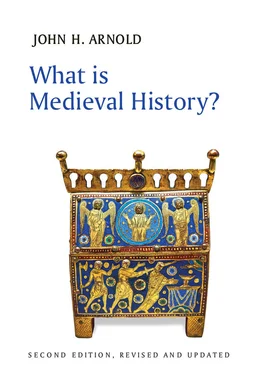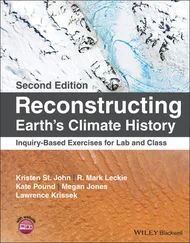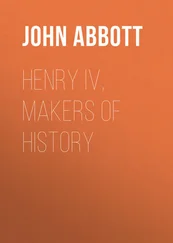A less fraught version of that legacy, the second problem, is the extent to which study of the middle ages continues to be framed, often unwittingly, by the attitudes, interests and concepts of the nineteenth century. First among those is the very idea of ‘nation’: we live in modern nation-states, our mother tongues tend to lead us to identify ourselves along national lines, and we correspondingly find it convenient to think of the world, both past and present, in terms of national boundaries. Indeed, I talked of ‘Italy’ in the first paragraph of this book, and mentioned ‘France’ and ‘Spain’ soon thereafter; in each case, this was to help the reader locate the action geographically. But these modern geographies fit awkwardly with changing medieval realities. There was no unified ‘Italy’ at any point after the late sixth century – rather, the Italian peninsula was continually carved up in different ways between the Holy Roman Emperor, the papacy and whichever monarch held the throne of Sicily (this being the very context for the Visconti plot against John XXII). The strongest allegiances felt by people in what we now call northern Italy were frequently to a particular city-state – Milan, Venice, Florence – and not to a nation. Spain similarly did not exist in its modern form: for centuries, much of the Iberian Peninsula was under Muslim rule, and the Christian portions (expanding south in spasms of conquest, particularly in the eleventh, early thirteenth and fifteenth centuries) were divided into several separate kingdoms until the end of the middle ages. France is perhaps a slightly clearer entity, but the French kingdom in the period I mentioned – the early thirteenth century – had expanded far beyond the Île-de-France (into Flanders and lands previously held by kings of England) only in the preceding two decades, with Aquitaine still in English hands, Burgundy essentially separate, and Languedoc only coming into French possession in 1271. Even England, with arguably the most centralized kingship of any country from soon after the Norman Conquest, could be seen as a rather loose entity, with uncertain borders to the north and west, and a questionable sense of relationship to its holdings in what is now France. None of these labels – English, French, Spanish, Italian, German – is terribly helpful when applied to the early middle ages; and can, indeed, be deeply misleading even for later periods.
So medievalists now need to think about nations critically rather than unproblematically celebrating them. Other hand-me-down concepts from the founders of medieval history have also been questioned in recent years: the coherence, in their contemporary settings, of different ‘bodies’ of law (Roman law and canon law in particular); the sense in which the Catholic Church was a singular, unitary entity; and the notion that there is a kind of ‘hierarchy’ of sources, moving initially from the official histories to governmental archives, and thence to ‘lesser’ materials. Anglophone medievalism has had a particular trait of Victorian (and later) scholarship to deal with: its tendency to ignore or even suppress ‘vulgar’ elements of the past that it found unseemly or which did not fit with its picture of the period. Thus, for example, Eileen Power’s 1928 translation of the late fourteenth-century advice manual Le Menagier de Paris omits most discussion of sexual sins, out of deference for its modern readership. 16And all histories of emergent ‘modernity’, while frequently focused on ‘national’ wars and struggles, have tended to homogenize and homeostatize the society of the middle ages, emphasizing its simplicity and organic changelessness rather than seeking out elements of social conflict, cultural friction or gendered struggle.
Of course, the last half-century or so of historiography has revised opinions in many of these areas. But traces of them still lurk, at their most distorting when not immediately obvious to modern practitioners. All forms of academic study periodically grapple with the conditions of their existence, and the legacies of their founders; such wrestling is informative, useful, necessary, but should not be the whole story or lead us into analytical paralysis. Nonetheless, the second caveat stands: remember where we came from.
The third problem is of a different order. The differences in national historiographical trends sketched above (focused particularly on Germany, France, the UK and the US) have persisted. The historical study of the middle ages is conducted, in each of those places today, under differing conditions, within differing traditions, with differing expectations, and to some degree in pursuit of different ends. How history itself is periodized can vary from country to country and area to area: Italian historiography, for example, tends to relinquish ‘medieval’ for ‘Renaissance’ at some point in the fourteenth century, while some strands of French research treat ‘ l’ancien régime ’ as an entity that stretched from medieval times up to the Revolution without a significant break.
In broad terms, the academic pursuits of each country have tended to have their individual timbre. France has long delighted in intellectual superstructures, more willing to sacrifice detail to the larger analysis, and examine la longue durée in an attempt to divine the structural essence of a period. French efforts, in this as in much else, often disgruntle the English, who are more frequently empiricist in method, focused on the particular and the local, insistent on the importance of details and exceptions. Germany is perhaps also more wedded to large-scale intellectual tools than England, but tools rather different from France’s: more usually a key defining concept such as ‘symbolic communication’, which is used heuristically to provoke specific questions in a methodical way. The US – its academic community larger by far – has taken elements from all these traditions, but has also perhaps tended to fetishize the (admittedly important) technical skills that medievalists deploy when studying original manuscripts, possibly paradoxically because of American scholars’ geographical dislocation from the archives they study. At the same time, that distance has also perhaps encouraged more structurally comparative and theoretical work in the US.
Also important are the different material conditions under which scholars work. Germany and France have extremely centralized systems of training and subsequent recruitment, and one outcome from this is a very strong patronage system (as is also the case in Italy), which tends to lead research either into patrilineal currents of development, or else spasms of Oedipal rebellion. Elements of this are present elsewhere, but much less institutionally inevitable. Funding for study in Germany largely operates through the collaborative model of the sciences, building ‘research institutes’ focused on a particular issue over a period of years, whereas, until recently at any rate, funding and research in the US and UK have been very individualistic. In both the US and, particularly, the UK, early career scholars live under a ‘publish or perish’ regime, which means that first books tend to come swiftly and noisily, as academics try to secure their first job or tenure. Another difference is the location and nature of archives. England has long had both a centralized national archive, and (from the mid-twentieth century) local record offices; in recent decades these, like other important libraries such as the British Library and the Warburg Institute, have had a very ‘customer-orientated’ policy of access. France, while possessing several national libraries and many local archives, is rather more bureaucratically bound; negotiating access to a manuscript in the Bibliothèque nationale in Paris, for example, involves the complex transference of three separate pieces of plastic card and several slips of paper between the researcher and the archivist. This does have an effect on the speed of the research that can be undertaken, if nothing else. Both Germany’s and Italy’s archives have always been regional, which thus affects the shape of the scholarship done there: very few Italian medievalists work comparatively across different city-states, for example.
Читать дальше




